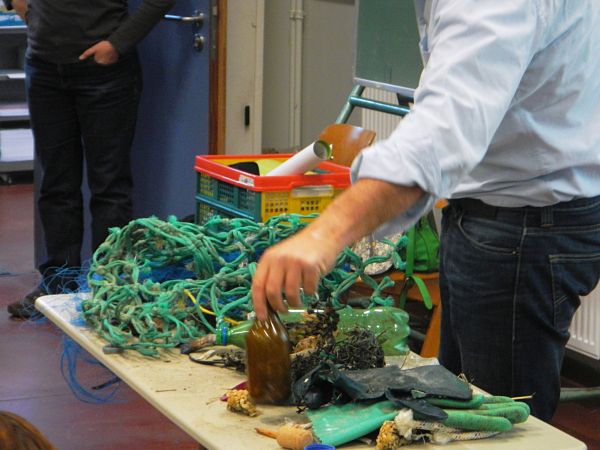(Micro)plastic in the ocean - Environmental Toxicology Research Group

Marine debris is an increasing and worldwide problem, which is mainly caused by a growing global plastic production and the continuing improper disposal of waste in our ‘disposable society’. Moreover, plastic is (almost) not degradable, resulting in the accumulation of this debris in our world’s seas and oceans. Of all marine debris, 60 to 80% is estimated to be plastic. This debris is not only aesthetically displeasing, but it also poses a serious threat to marine organisms and even humans.
In the last decade, it has been discovered that the large pieces of plastic debris degrade into smaller pieces called microplastics, which can be as small as 20 µm. Because of their small dimensions these microplastics (plastic pieces smaller than 1 mm) pose a new kind of threat to small organisms at the bottom of the food chain as these particles can be ingested and transported to the tissues of these animals.
A quantitative monitoring study of marine debris on the seabed, sea-surface and the beach along the Belgian shore reported over 64000 items per km, representing a weight of 92.7 kg of litter per km of beach. These are some of the highest reported numbers worldwide. On every sampled beach, microplastics were present.
On average, over 3100 items per km² were found on the seabed of the Belgian Continental Shelf. Floating marine debris was assessed both visually and with a neuston net, yielding different results, because most floating items were too small to spot from a distance. Based on the neuston net survey, over 3800 items were retrieved per km².
Entanglement and stomach content of seabirds were investigated to assess the impacts of macrodebris on marine species. 0.6% of beached birds were found entangled: mostly in fishing gear, but also in six-pack rings, plastic bags, sheets, and plastic cups. Of all Northern Fulmars (Fulmarus glacialis) examined, 95% had ingested some kind of plastic. On average they had 48 pieces of plastic in their stomach. More than half of the birds had more than 0.1 gram of plastic in their stomach (keep their low body weight in mind!), which is well above the level to qualify the North Sea as being clean (OSPAR EcoQO).
Additional to the field studies, laboratory experiments were set up to assess the effects of the uptake of microplastics on two invertebrate species: Mytilus edulis, a filter feeder, and Arenicola marina, a deposit feeder. Both species ingested the microplastics, and the smallest particles were even transported into the tissues of the animals. However, no significant adverse effects were detected during short-term exposure experiments.
The economic impact of marine litter along the Belgian coast was assessed by supplying questionnaires to 4 key sectors of human activity which are affected: touristic organisations, municipalities, harbours, and sea fisheries. All sectors are negatively affected by the presence of marine debris. The overall annual cost per municipality for removing litter from the beaches is over 32 000 Euros. Removing litter from the harbours yields a yearly average cost of over 4 000 Euros per harbour. The fishing industry suffers greatly from fouling incidents and a loss of income from reduced fishing time due to clearing litter from nets: i.e. 2.16 million euros per year.
Read more about this study in the AS-MADE report (Assessment of marine debris on the Belgian continental shelf: occurrence and effects), performed by the Environmental Toxicology Research Group.
